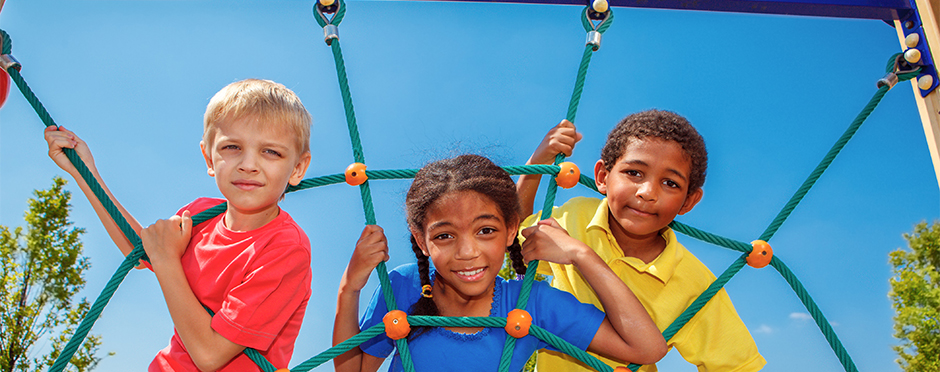
Best Ways to Stay Pain-Free On The Playground
Leave a CommentDaily physical activity for children provides a number of advantages and health benefits for development. According to Dr. Edward Laskowski of Mayo Clinic, children should do vigorous activities at least three days a week. Adults who care for children can encourage them to participate in active play that includes many common school-age activities-such as playing on playground equipment. Despite all the musculoskeletal benefits of running, climbing, and jumping, there are always considerations to best ensure safety and pain-free play.
Most of my formal education has taught me applications to help minimize the risk of injury during physical play. All of my parenting experience has allowed me to connect toddler-driven firsthand education to my formal training to make specific recommendations for others.
Grip Matters: I’m not talking about hand strength here. Using an overhand, neutral, or underhand grip when reaching, swinging, and pulling up on the playground equipment can place the shoulder joint in externally or internally rotated positions. This shoulder rotation activates different stabilizer muscles that can minimize muscle imbalances, poor posture, or shoulder joint instability. Placing load (in this case, one’s body weight) on the shoulder in diagonal, frontal, or backward planes of motion with such varying positions can lay a great foundation for strong pain-free shoulder health on and off the playground.
Tummy Tight: Core bracing or core stabilization assists transferring energy from the lower body to the upper body, and vice versa. It also protects the spine and hips during dynamic movements like jumping from equipment. The strength of the shoulders, stomach, low back, and hip muscles also allow individuals to be more mobile at the hands and ankles for reaching, gripping and stepping. So, activities that require children to squat, hold, or hang all help improve core stability and, therefore, can minimize injuries when playing dynamically. like skipping, climbing, throwing, jumping from elevated surfaces, crawling, etc.
Endurance: When fatigue occurs, there can be a mechanical breakdown of the musculoskeletal system. This overloaded torque or strain on joints and muscles can result in pain or injury. Therefore, performing vigorous activities like Dr. Laskowski mentioned is important to improve muscle endurance for repetitive movements. Some forms of play that can pair well for endurance for children include bike riding, hiking, jumping rope, swimming, etc. The interests or resources of each child will determine how the activities get shaped. Still, regardless of the mode of exercise, repetitive vigorous movement can prevent injury when participating in playground play of all forms.
Seek Treatment When Necessary
If your child is experiencing pain or has other physical limitations, contact your nearest Athletico for a free assessment. Free assessments are available in-clinic and virtually through our Telehealth service.
*Per federal guidelines, beneficiaries of plans such as Medicare, Medicaid, Tricare, VHA and other federally funded plans are not eligible for free assessments.
The Athletico blog is an educational resource written by Athletico employees. Athletico bloggers are licensed professionals who abide by the code of ethics outlined by their respective professional associations. The content published in this blog is for informational purposes only, does not constitute medical advice and should not be relied on for making personal health decisions.
References:
1. Edward R. Laskowski, M.D. “How Much Exercise Do Your Kids Need?” Mayo Clinic, Mayo Foundation for Medical Education and Research, 25 May 2021, https://www.mayoclinic.org/healthy-lifestyle/fitness/expert-answers/kids-and-exercise/faq-20058336#:~:text=Laskowski%2C%20M.D.,least%20three%20days%20a%20week.
